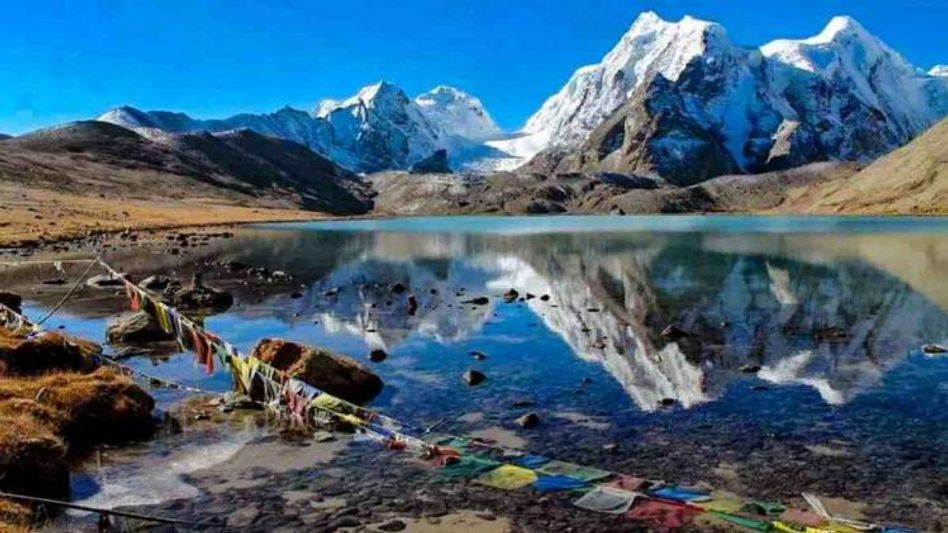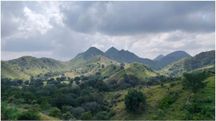World Tourism Day 2022: A natural treat for travellers from Sikkim
The tourism industry is of paramount importance in Sikkim, it is the backbone and tower of strength in Sikkim's economy
 A natural treat for travellers from Sikkim
A natural treat for travellers from SikkimSikkim offers a stunning range of natural ecosystems and fauna within a tiny geographic region of about 7,096 square kilometres, with holy lakes, waterfalls, and hot water springs adorning the hilly landscape.
Sikkim is a wonderland blessed with natural abundance, ranging from icy cold deserts to flowering alpine meadows to lush green forests and emerald mountain lakes. It is located in the Eastern Himalayan region and has an area of 7,096 square kilometres and elevations ranging from 300m to 8,586m above sea level.
The tourism industry is of paramount importance in Sikkim, it is the backbone and tower of strength in Sikkim's economy.
The panoramas are limitless and enthralling from river valleys and lush woods to alpine meadows with a rainbow of flowers blossoming in monsoon; to ice barren high glaciers and freezing deserts.
Gurudongmar Lake
Gurudongmar Lake, one of Sikkim's most gorgeous and clean lakes, is located near the Tibetan and Chinese borders in the north. The frozen alpine lake, located at 5,183 metres in the highlands, is one of the major sources of the river Teesta. The lake is named after the great guru Padmasambhava, who is said to have been through this area on his tour to Tibet.
Lachen and Lachung valley
Lachen, one of three towns in North Sikkim, is notable for its natural greenery and for being home to Tibetan nomadic tribes. Lachung is a lovely little village surrounded by apple orchards, pine forests, and waterfalls. Lachung, Lachen, Valley is a natural wonderland with snow-capped peaks, wide expanses of alpine lakes, green environs, and tranquil temples.
Nathula Pass (Indo -China border)
Nathula is a border crossing between India and China (La means Pass in Tibetan). The route runs through Tsongmo Lake and is 56 kilometres from Gangtok. For most portion of the year, the area is blanketed with snow. The route was originally utilized for commerce by merchants from India and Tibet. It was part of the famed Silk Route that stretched along the Zuluk - Memenchu - Jelepla route, linking the plains of Bengal with Tibet.
Tsomgo lake
Tsomgo Lake, also known as Tsongmo Lake or Changu Lake, is a glacier lake in the northeastern state of Sikkim, 40 kilometres (25 miles) from the capital Gangtok. The lake, which is located at an elevation of 3,753 m (12,313 ft), remains frozen during the winter season. The lake's surface changes colours with the seasons and is held in high regard by the indigenous Sikkimese people. Buddhist monks made predictions after seeing the shifting colours of the lake. After the winter season ends in the middle of May, the lake's perimeter blossoms with flower species such as rhododendrons (the state tree of Sikkim), primulas, blue and yellow poppies, irises, and so on.
Chardham Namchi
When we think of Char Dham, we typically think of the four holy sanctuaries in Uttarakhand on top of the Himalayas. Around 2 hours drive away from Sikkim’s capital, Gangtok, lies the marvellous temple compound of Char Dham locked away by spectacular mountains. Anyone's sins are said to be washed away at this location. It houses shrines to Lord Vishnu, Lord Krishna, Lord Jagannath, and Lord Shiva. The shrine complex is located on the mountainous road between Melli and Jorethang. The sprawling temple complex, also known as the Siddhesvara Dham, was dedicated in November 2011. A 108-foot statue of Lord Shiva is also housed in the magnificent structure.
Goechala Trek
Goechala, located at an elevation of almost 15,000 feet, provides a journey like no other. While it is one of the oldest hiking routes in the Himalayas, it is not as well known. Many hikers dream of reaching Goechala, which offers breathtaking vistas of the Kanchenjunga Range, the world's third-highest mountain range. You will be able to see not just Kanchenjunga but also numerous other Himalayan peaks. The Goechala Trek, which includes a number of summits along the way, is the ultimate adventure.
Dzongri Trek
Dzongri Trek is the Goechala Trek's minor trek option. The Dzongri trek is the best option for hikers who wish to see much in a short amount of time. Trekkers on this magnificent journey get the opportunity to explore and see the hypnotic exquisiteness of stunning vistas while hiking. In reality, Dzongri and Dzongri La (view point) are the best places to see the beautiful mountains and towering peaks of the Sikkim Himalayas.
Kangchendzonga Nationa Park
Khangchendzonga National Park, also known as the Kanchenjunga Biosphere Reserve, is a national park and a biosphere reserve in the Indian state of Sikkim. It was included on the UNESCO World Heritage List in July 2016, becoming India's first "Mixed Heritage" site. It was included in the UNESCO Programme on Man and the Biosphere. The park is named after Kangchenjunga (variant spelling Khangchendzonga), the world's third-highest peak at 8,586 metres (28,169 feet). The park's overall size is 849.5 km2 (328.0 sq mi).
Pelling
Pelling, a lovely town in Sikkim's West region, has overtaken Gangtok as the state's second most popular tourist attraction. The primary attraction of the site is the beautiful view of Khangchendzonga and the neighbouring peaks, which are located 10 kilometres from Geyzing and 130 kilometres from Gangtok.
Centuries-old monasteries
Sikkim's culture is inextricably related to Tibetan Buddhism, with over 250 monasteries. Sikkim is not complete without its monasteries. The majority of monasteries are affiliated with the Nyingmapa or Kargyupa sections.
Zuluk
Dzuluk, Zuluk, Jhuluk, or Jaluk is a tiny hamlet in East Sikkim, India, lying at a height of roughly 10,000 feet (3,000 m) on the steep terrain of the lower Himalayas (Pincode 737131). This is a relatively new and quirky resort in East Sikkim. It is rapidly becoming a new tourist attraction. The magnificent view of the eastern Himalayan mountain range, including Kanchenjunga, contributes to its tourism value.
Copyright©2025 Living Media India Limited. For reprint rights: Syndications Today









